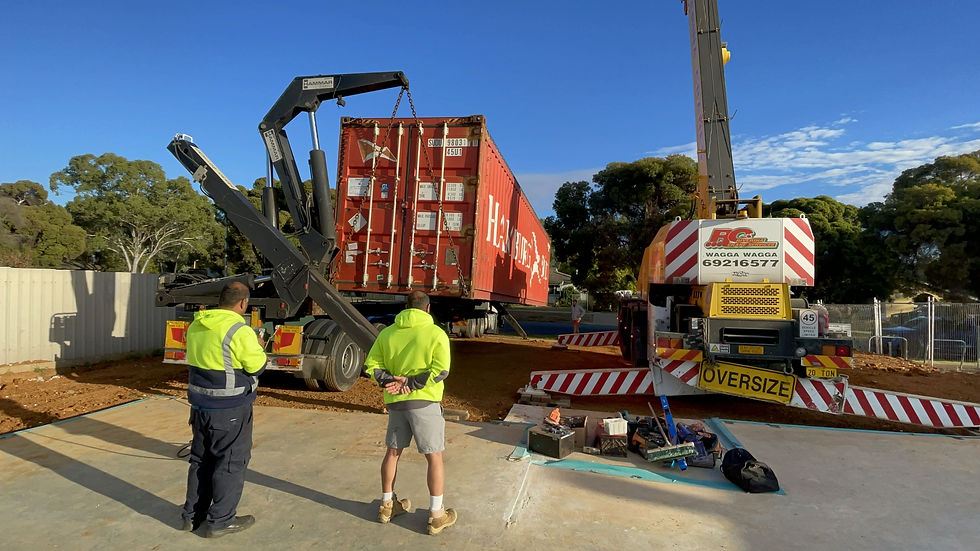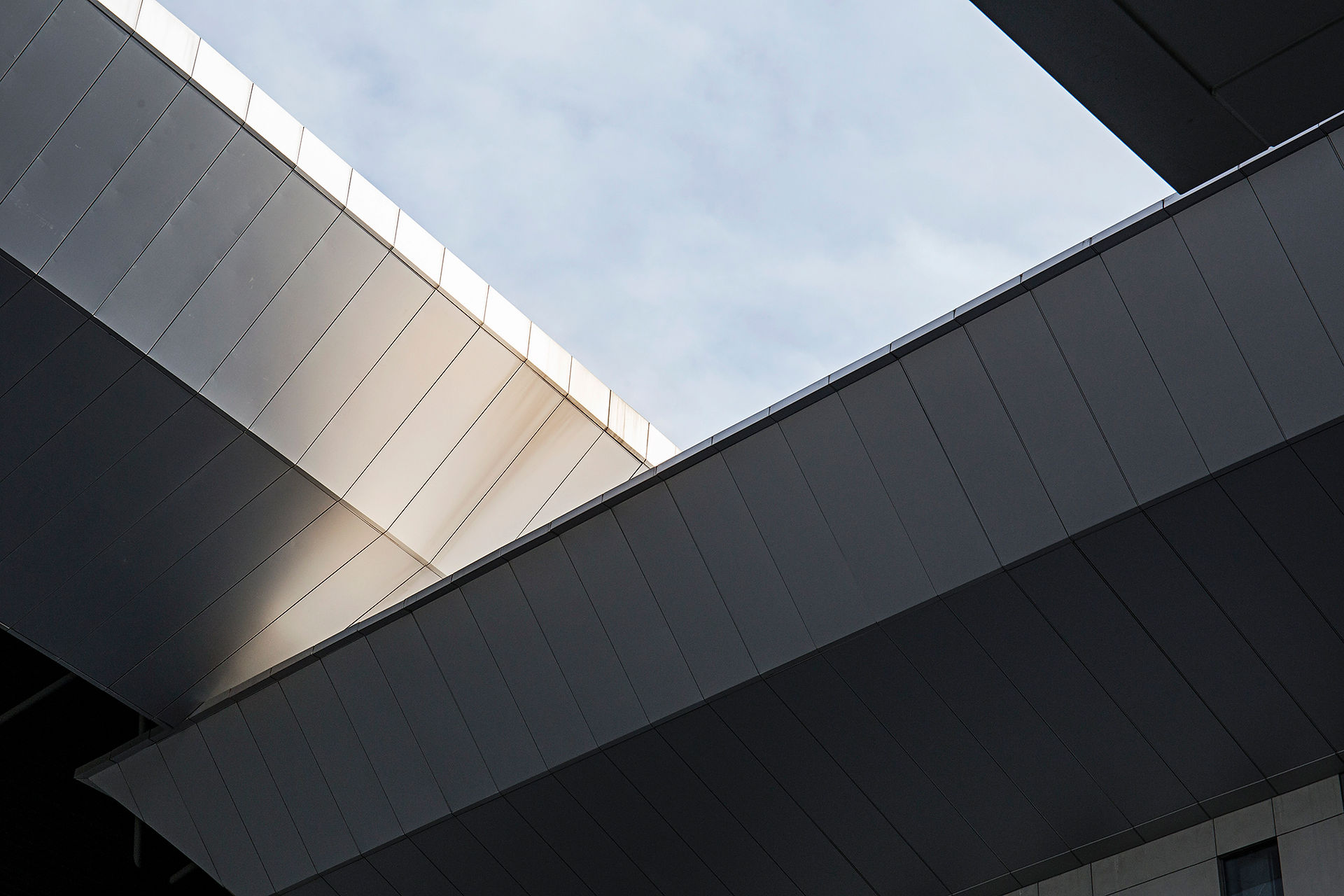Why Prefabricated 2D Panel Systems Work Best for Remote Sites: Rail + Truck Delivery Made Easy
- Jan Lienemann

- Sep 26
- 5 min read
Updated: Sep 27
Prefabricated housing is no longer a niche solution - it’s a practical, scalable way to deliver quality homes to regional and remote communities. For many Australian projects outside major cities, prefab 2D panel systems like ours offer distinct logistical and economic advantages over volumetric modules or fully site-built methods.
In this post we’ll explain exactly why 2D panels work so well for remote sites, how rail + truck delivery simplifies logistics, the transport and handling advantages, and how Zen Haus Group’s system makes this approach particularly efficient and reliable.
Quick overview - what are 2D prefabricated panel systems?
2D panel systems are prefabricated wall, floor and roof panels manufactured off-site and delivered flat (or on edge) to site for assembly. Unlike volumetric modular units that arrive as complete rooms or “boxes”, 2D panels are lighter, flatter, and more flexible for transport - especially important when moving large volumes across long distances or into constrained rural access routes.
Zen Haus Group’s system including our upcoming Nuvista range (‘A New Vision for Modern Living’) uses engineered panel components designed for speed of assembly, durability and energy performance. Panels are typically pre-cut, pre-lined, and, where required, pre-routed for services - meaning trades complete the final fit-out quickly once panels are craned into position.

Why transport matters in remote Australia
Remote and regional projects present unique transport challenges:
long distances from factory to site
variable road conditions and bridge/height/weight restrictions
limited crane availability and site laydown space
higher per-kilometer costs for oversized loads
the need to combine different transport modes (rail + truck) to be cost-effective
Because 2D panels are fundamentally flat & compact they are inherently easier to transport by standard freight modes - which is why they’re often the best choice for remote delivery.
Rail + truck delivery: the practical advantage
1. Better utilisation of standard containers and trailers
2D panels can be stacked or packed efficiently on standard 40ft trailers or in flat-rack containers for rail. This means:
Fewer specialised permits - many panel loads fall within NHVR standard wide or high limits.
Lower transport rates - standard trailers are cheaper than escort-requiring oversize vehicles.
Reliable rail legs - long-distance sections can be moved by Australian freight rail (cheaper per km), then transferred to truck for last-mile delivery.
2. Reduced freight complexity
Using rail for the long-haul portion reduces exposure to roadside hazards and reduces fuel and labour costs. When panels arrive at a regional rail hub, a short truck trip to site completes delivery - typically on standard local transport that is able to navigate rural roads more easily than large volumetric modules.
3. Easier last-mile access
Because panels can be broken down into manageable loads, local contractors can use smaller trucks for the final leg, avoiding issues with narrow access, low bridges or timber bridges with weight limits.
Transport benefits: full analysis
A. Load profile and weight advantages
Lower per-unit weight: Individual wall and floor panels often weigh substantially less than volumetric modules. For example, panels in many modern systems typically range up to ~1 tonne each - manageable for standard cranes and trucks. (Zen Haus Group panels are engineered for crane handling and are commonly within this manageable range.)
Incremental handling: Lighter panels mean fewer heavy-lift operations, lower crane hire classes, and reduced safety risk.
B. Stacking and packing efficiency
Flat-packed geometry: Panels stack neatly on trailers and in flat racks. This increases the number of square metres per truck compared with volumetric units, reducing total trip counts.
Protection in transit: Panels occupy less volume and can be wrapped and braced to protect finishes in transit more efficiently than fragile volumetric interiors.
C. Regulatory and permit simplicity
Less oversize/overmass permitting: Many panel loads fit within the general freight guidelines for Australia, reducing administrative delays and escort costs.
Rail-friendly: Slimmer, flatter panel loads are more likely to comply with rail freight profiles than oversized volumetric units.
D. Cost and carbon footprint
Lower freight cost per m²: Because more panels fit per truck/flat-rack, per-home transport costs fall.
Fewer trips = lower emissions: Reduced vehicle movements directly reduce diesel consumption and greenhouse gas emissions.
E. Flexibility and contingency handling
Split deliveries: Panels can be staged to suit site readiness progress.
Easier recovery from delays: If a single truck is delayed, only a fraction of the build is affected - unlike volumetric modules where loss of a whole module is a major setback.

Site assembly advantages
Faster assembly with modest crane requirements
Because Zen Haus Group’s panels are designed for crane-assisted lift and quick bracing, erection can be completed with a single mobile crane of moderate capacity - instead of multiple heavy cranes that volumetric modules sometimes demand.
Reduced laydown space
Panels stack compactly on site, needing less laydown area. This is particularly beneficial for constrained or steep rural lots where storage space is limited.
Local Trades Integration
One of the key advantages of 2D panel systems is the way they seamlessly integrate with local trades, providing practical experience with modern methods of construction (MMC). Panels are engineered for efficient crane-assisted erection, reducing reliance on large, specialised crews and enabling local carpenters, electricians, and plumbers to complete high-quality work onsite.
This approach offers multiple benefits:
Skills development: Local trades gain hands-on experience with MMC, including prefabricated panel installation, service integration, and rapid assembly techniques.
Job creation: Onsite involvement generates employment opportunities in regional and remote communities, supporting local economies.
Reduced reliance on external teams: By empowering local trades, projects minimise delays, travel costs, and dependency on distant contractors.
Alignment with government initiatives: This model supports programs that promote workforce upskilling and sustainable housing delivery, making it particularly attractive for council-backed or funded projects.
By combining efficient panel design with skilled local labour, 2D panel systems not only accelerate construction but also cultivate a more capable, modern workforce - addressing one of Australia’s hottest topics: the shortage of skilled trades in the construction sector.
Practical logistics workflow (rail + truck) - step by step
Factory pack & label → manufactured, wrapped, labelled for sequential erection.
Container/flat-rack loading → efficient use of 40ft trailers or rail flat racks.
Rail long-haul leg → panels move via intermodal rail networks.
Intermodal transfer → at regional hubs, panels shift to local trucks.
Last-mile trucking → staged deliveries to suit crane booking and site readiness.
On-site crane lifts & bracing → panels craned, braced, and fixed in sequence.
Local trade completion → trades finish services, linings, and fixtures.
Cost comparisons - real savings
Recurring savings patterns include:
Fewer transport trips
Lower crane hire rates
Reduced need for police escorts or oversized permits
Shorter on-site programs = reduced overheads
Collectively, these efficiencies convert into meaningful savings over volumetric delivery and conventional builds.
Sustainability benefits
Using rail + truck and 2D panels lowers carbon intensity in two ways:
Lower freight emissions: Rail is significantly more efficient than long-haul trucking (source).
Less waste and rework: Precision-manufactured panels minimise on-site cutting, reducing waste and associated transport for extra materials.
FAQ
Q: Can 2D panels be delivered to very remote sites?
A: Yes - 2D panels are designed for long-distance rail + truck delivery.
Q: Do panels require specialised cranes?
A: No. Most panels, including our Nuvista range (coming soon), are engineered for standard mobile cranes.
Q: Will local trades still be required?
A: Yes - 2D panel systems are designed to integrate with local trades, keeping jobs in the community.
Conclusion
For builders and developers delivering housing in regional and remote Australia, prefabricated 2D panel systems offer unrivalled logistical efficiency, cost savings, speed, and sustainability.
If you’d like to find out more about our prefabricated 2D panel system, get in touch today at:


Comments